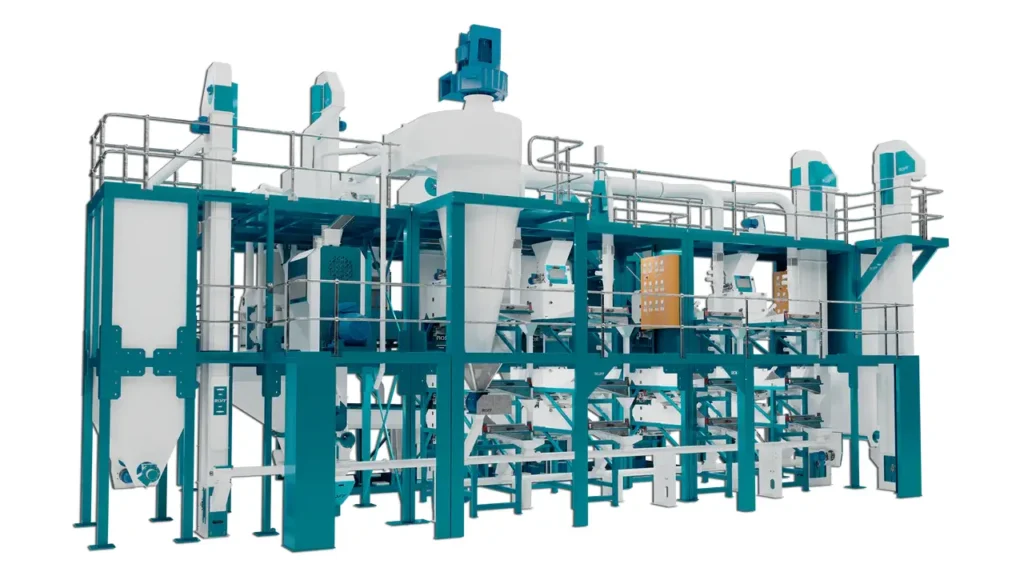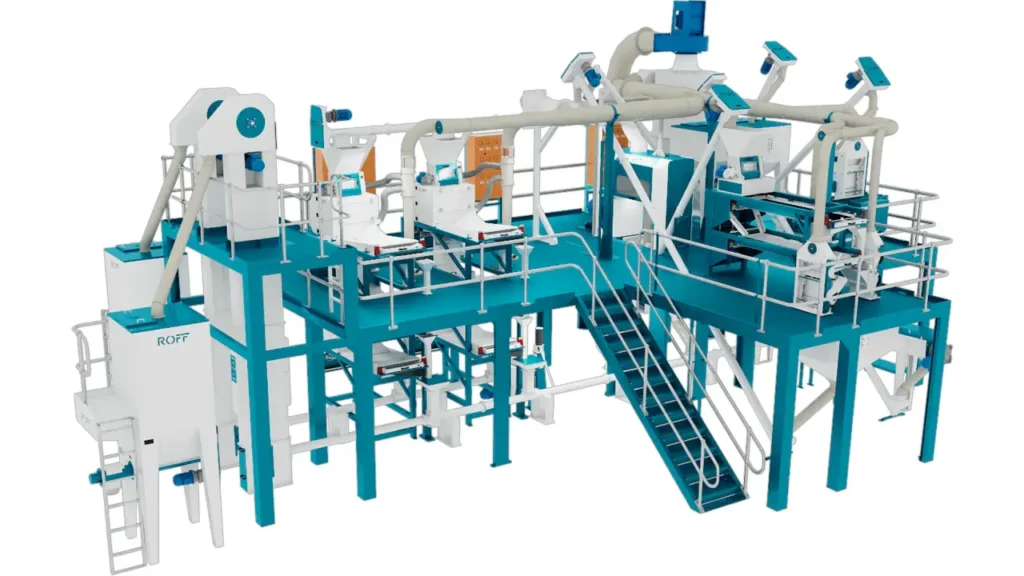Flour Mill Machinery
Flour Mill Machinery: Modern Milling Technology
Flour production is one of the oldest and most fundamental food processing processes in human history. This journey, which spans from traditional mills to modern flour plants, has undergone a major transformation alongside technological advancements. Today, flour mill machinery consists of sophisticated systems that ensure high efficiency, hygiene standards, and quality control.
In a modern flour mill, wheat undergoes a series of processes from its acceptance as a raw material to its transformation into the final product: flour. Specially designed machines are used for each stage of this process. The quality of the flour, the extraction rate, and overall efficiency are largely dependent on the technological level of the machinery used and its correct operation.

Types and Features of Flour Mill Machines
Cleaning and Conditioning Machines
These are the machines used to prepare wheat for processing. In the first stage, foreign materials (stones, dust, metal, straw, etc.) are removed from the wheat. Then, the wheat is given the appropriate moisture content to prepare it for milling.Main Machines:
- Aspirators and ventilation systems
- Trieurs and separators
- Stone separators and gravity separators
- Magnetic separators
- Conditioning silos and dampening systems
Milling Systems (Roller Mills)
Milling systems, which form the heart of flour production, break down the wheat kernel into flour. Today, roller mills operating on the gradual reduction principle are used. In this system, wheat is passed through a series of roller pairs and is gradually reduced in size.Key Features:
- Horizontal or vertical roller mills
- Adjustable roll gap
- Different corrugation patterns (smooth, spiral, grooved)
- Automatic temperature control systems
- High-chromium alloy or ceramic rollers
Sifting and Classification Machines
The product obtained after the milling process consists of particles of different fineness. Sifting machines separate this mixture according to their size, enabling the separation of different products such as bran, semolina, and flour. Multi-level sieves called plansifters are used for this process.Key Features:
- Multi-level sieve systems
- Replaceable sieve wires
- High-capacity classification
- Automatic cleaning systems
- Dust control mechanisms
Packaging and Storage Systems
The proper packaging and storage of flour after production is critical for preserving product quality. Modern packaging machines can package flour in the desired weight, under hygienic conditions, and with minimal human contact.Key Features:
- Automatic weighing and filling systems
- Vacuum packaging machines
- Bag sewing and sealing systems
- Palletizing robots
- Climate-controlled storage silos
Flour Mill Machine Selection Criteria
Choosing the right machinery plays a decisive role in the efficiency and profitability of a flour mill. The main criteria to consider when selecting machinery are:Capacity and Scale
Your plant’s hourly and daily production capacity is the most important factor in machine selection. While machines with a capacity of 24-100 tons/day are suitable for small and medium-scale businesses, industrial-scale factories should prefer machines with a capacity of 200-500 tons/day.Energy Efficiency
Energy costs constitute a significant portion of the total operating costs in flour production. Energy-efficient machines provide significant savings in the long run. Motor efficiency classes (IE3, IE4) and energy recovery systems should be evaluated in this regard.Material Quality and Durability
Since flour production machines are exposed to continuous operating conditions, they must be manufactured from high-strength materials. Roller mills, sieves, and cleaning equipment, in particular, should be made of wear-resistant materials.Technical Support and Spare Parts
The machine’s technical service support and ease of obtaining spare parts are crucial for minimizing production loss in case of possible breakdowns. Locally manufactured machines can offer an advantage in this respect.Flour mill machinery represents complex and efficient systems that merge a millennia-old milling tradition with modern technology. Selecting the right machinery plays a decisive role in operational efficiency and product quality.
Today, flour mills are equipped with full automation systems, high energy-efficiency equipment, and advanced quality control technologies. These technological advancements enable higher capacity production, at lower costs, and with higher quality flour.
Entrepreneurs planning to invest in a flour mill are advised to conduct detailed market analysis, capacity planning, and technical feasibility studies before selecting machinery. With the right equipment selection and regular maintenance, flour mill operations can be sustained efficiently for many years.



